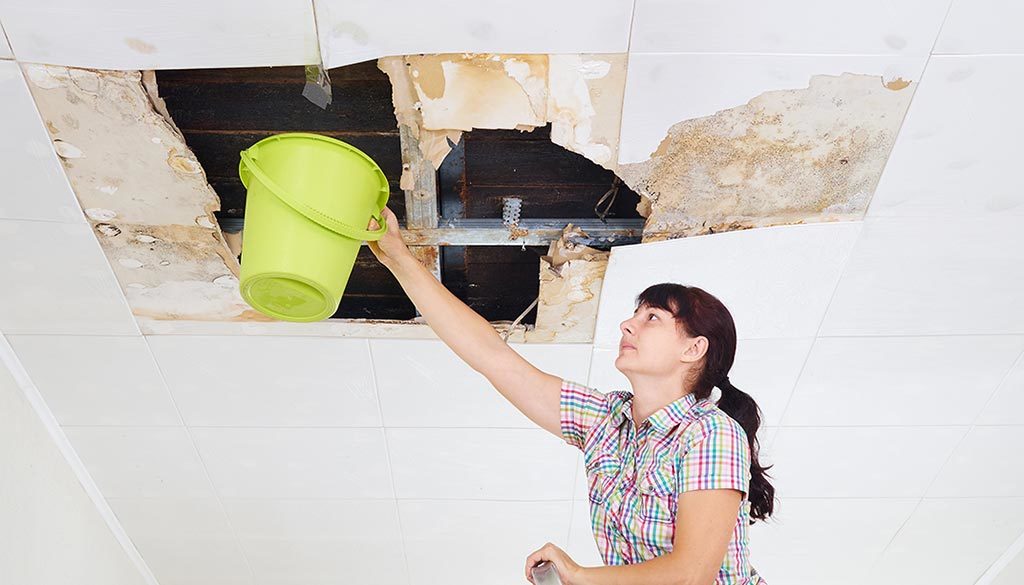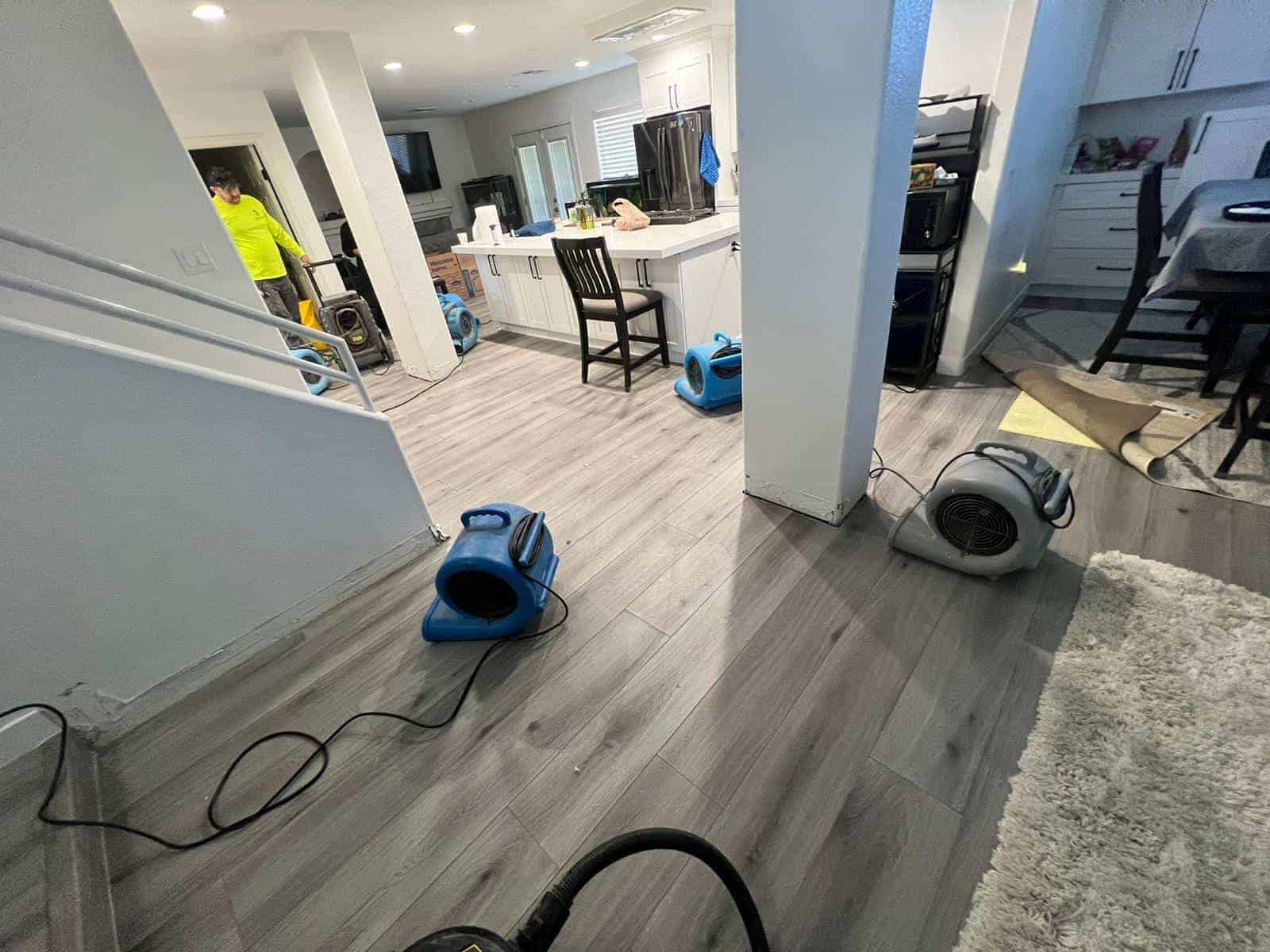Reliable Water Damage Cleanup Services to Restore Your Property Quickly
Wiki Article
The Refine of Water Damages Cleaning: Guaranteeing Your Home Is Brought Back Effectively
Water damage can be an overwhelming obstacle for property owners, demanding a organized and careful cleanup procedure to restore security and functionality. A thorough analysis is critical to recognize the level of the damages and determine the ideal removal actions. Following this, effective water extraction strategies play a critical role in mitigating additional damage. Nevertheless, the nuances of drying out, sterilizing, and eventual restoration are equally crucial and frequently overlooked. Recognizing these phases can make a significant distinction in the result of your home's remediation, triggering a closer consider what each action requires.Evaluating the Damages
Upon discovering water damage, the first step is to completely evaluate the extent of the impact. This first examination is vital, as it helps identify the necessary actions for reliable cleaning and remediation. Begin by examining the affected locations, including walls, ceilings, floors, and individual belongings, to determine the source of the water intrusion, whether from flooding, leakages, or condensation.Documenting the damage is vital for both insurance cases and preparing reconstruction initiatives - damage restoration services. Usage photographs and written notes to record the severity of the damages, keeping in mind any type of damaged architectural elements and products. Pay special attention to areas that might not be immediately visible, such as behind walls and under carpetings, as concealed dampness can bring about more difficulties, including mold and mildew growth
Additionally, analyze the timeline of the water direct exposure. The longer the products remain wet, the greater the capacity for damage. Recognizing the duration of direct exposure will certainly inform the necessity of remediation initiatives. Inevitably, a thorough evaluation prepares for an effective water damage cleanup process, guaranteeing that all affected locations are resolved effectively and thoroughly.
Water Removal Techniques

Experts commonly utilize submersible pumps for bigger volumes of water, which can rapidly ease flooding in basements or various other affected areas. For smaller quantities, wet/dry vacuum cleaners are commonly used to remove residual moisture from carpetings and difficult surface areas. In addition, using mobile extractors enables targeted elimination in restricted rooms or areas with delicate materials.
In circumstances of polluted water, such as sewer or floodwater, progressed removal strategies might involve making use of biohazard devices to guarantee safety and conformity with health and wellness regulations. High-powered extraction devices are critical in decreasing water retention in architectural products, which can lead to mold development and architectural wear and tear otherwise addressed immediately.
Ultimately, the performance of water removal strategies plays an essential function in the total success of the water damages clean-up procedure, preparing for succeeding reconstruction efforts.
Drying and Dehumidification
As soon as standing water has been efficiently drawn out, the following vital stage in the water damage clean-up process is drying out and dehumidification. This step is vital to stop additional damages and mold and mildew development, which can happen within 24 to 2 days in moist settings.To accomplish efficient drying out, customized equipment such as industrial-grade air movers and dehumidifiers is utilized. Air movers distribute air throughout wet surfaces, boosting dissipation prices, while dehumidifiers reduce moisture levels in the air, promoting a favorable atmosphere for drying out. The combination of these devices makes sure that dampness is extracted from walls, furnishings, and floorings, permitting them to completely dry extensively.
It is essential to monitor the drying procedure very closely. Professionals commonly use wetness meters to examine the wetness material in various materials, ensuring that all impacted locations reach appropriate dryness degrees. This careful technique helps to avoid hidden dampness pockets that can cause architectural damages or harmful mold development.

Cleansing and Disinfecting
After the drying and dehumidification phase is full, the next crucial action in water damage clean-up is cleansing and sterilizing the affected locations. This procedure is important to prevent the development of mold, germs, and other water damage virus that flourish in wet settings.The cleansing stage usually includes removing any particles, dust, and pollutants from surface areas using specialized cleaning up agents. For difficult surface areas, a combination of soap and water or business cleaning products is frequently utilized. Soft materials, such as furniture and rugs, may call for a lot more considerable cleaning methods, including heavy steam cleansing or deep extraction techniques, to ensure extensive hygiene.

Disinfecting complies with cleaning, using EPA-approved disinfectants to eliminate hazardous microorganisms. This step is vital, specifically in locations that may have entered into contact with floodwaters or sewer, as these resources can position serious health and wellness threats.
Additionally, it is important to address any type of staying smells, which might call for making use of smell neutralizers or advanced techniques like ozone therapy. Proper cleaning and disinfecting not only bring back the security and health of your home however additionally prepared for effective restoration and repair services in succeeding stages of the water damage clean-up process.
Restoration and Repairs

Once the evaluation is full, repair efforts can start. Additionally, flooring might call for comparable attention, depending on the level of water exposure.
It is vital to engage knowledgeable repair professionals throughout this procedure, as they have the expertise to take care of complicated repair work properly. They can help alleviate potential future concerns, such as mold and mildew growth or architectural instability, thus making certain a risk-free and habitable living setting. Inevitably, effective restoration and fixings recover the home's stability and improve its total value.
Final Thought
To conclude, the procedure of water damages cleanup is critical for recovering a home to its pre-damage problem. Each stage, from examining the damages to carrying out effective water removal techniques, followed by comprehensive drying, disinfecting, and essential fixings, plays a vital role in ensuring safety and security and compliance with building criteria. Reliable implementation of these steps not just reduces immediate damages but likewise boosts the long-lasting stability and value of the home.Water damages can be an overwhelming challenge for homeowners, requiring a structured and meticulous cleanup procedure to recover security and functionality. Eventually, a thorough analysis lays the groundwork for an effective water damages cleaning process, ensuring that all impacted locations are dealt with efficiently and extensively.
Effective water removal strategies are crucial in alleviating damage and protecting against further issues adhering to a water intrusion occasion.In verdict, the procedure of water damages cleaning is vital for restoring a home to its pre-damage condition. Each phase, from assessing the damages to carrying out efficient water extraction methods, complied with by detailed drying, disinfecting, and necessary repair services, plays an important function in making certain safety and security and conformity with structure criteria.
Report this wiki page